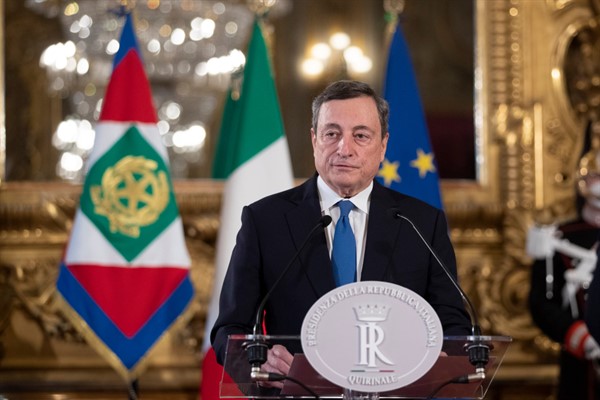Italy fell into a political crisis in late-January, when, following disagreements in the coalition then headed by Prime Minister Giuseppe Conte, a small but crucial part of the government withdrew its support. Without the backing of former Prime Minister Matteo Renzi’s Italia Viva party, Conte no longer had the required majority in Parliament. Given the dire straits of Italy’s health system and economy due to the coronavirus pandemic, the unexpected move raised concerns over the country’s ability to effectively continue its vaccination campaign and lay the foundations for economic recovery.
Those fears were alleviated on Feb. 18, when Mario Draghi, the former governor of the European Central Bank, was officially confirmed as Italy’s new prime minister. After several days of consultations with the various political parties in Parliament, Draghi formed a Cabinet comprising ministers from across the political spectrum as well as some nonpolitical “technical” appointees. Together, they take on the very difficult task of overcoming the economic fallout from COVID-19 as well as tackling Italy’s pre-existing structural problems.
In his new role, Draghi will need the support of Parliament to pursue substantial reforms aimed at increasing Italy’s productivity, while also submitting an investment plan for approval by the European Commission to access financial support from the European Resilience and Recovery Facility. The facility, known as the ERRF, is responsible for disbursing funds raised by the European Union’s historic collective debt deal reached last year to finance member states’ recoveries from the economic impact of the pandemic.

